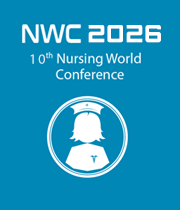Title : Integrating disaster education into the nursing curriculum
Abstract:
The ongoing and increasing global threat of terrorism, natural and man-made disasters, and pandemic incidents means that nurses in every discipline must possess the knowledge to safely and effectively respond to an incident. From emergency rooms to community clinics, nurses play an integral role in disaster response but are often unprepared to handle the complex consequences of disasters. Yet, most nurses feel an innate responsibility to respond while perceiving themselves as ill-prepared to do so. As a profession, nursing has a humanitarian duty to incorporate evidence-based disaster education into nursing curricula to ensure that future nurses possess the necessary knowledge and skills to respond to local, national, and global incidents. This presentation will provide an overview of how to integrate and sustain disaster education into the curriculum, along with strategies for creating an interactive and interdisciplinary course. In 2005, the School of Nursing (SON) at Shenandoah University identified a gap in the nursing curriculum related to disaster education. Consequently, the faculty developed and integrated a three-credit course on emergency and disaster preparedness and response into the curriculum. This course has been consistently offered twice a year for 20 years and remains a required course for all senior undergraduate nursing students. As the disaster course was being created, the SON partnered with the local American Red Cross chapter to receive supplemental disaster training, equipping faculty and students to participate in local disaster responses if needed. A multitude of innovative pedagogical approaches to teaching the disaster course are utilized. Strategies include, but are not limited to, theoretical analyses, tabletop exercises, interactive activities, video-based discussions, disaster drills, simulations, and virtual reality (VR). Specialty training has also been added to teach strategies for controlling severe bleeding (Stop the Bleed) and administering Naloxone for opioid overdose in community settings (Revive! Training). The disaster content presented in these courses fulfills the expected program outcomes set forth by nursing organizations and accrediting bodies and prepares students for NCLEX licensure in disaster-related topic areas (American Nurses Association [ANA], n.d.; Commission on Collegiate Nursing Education [CCNE], 2021; National Council of State Boards of Nursing [NCSBN], 2023). Disaster knowledge is imperative for every nurse and disaster education begins in every nursing program. Nurses unprepared for disasters are less willing to respond when called upon. The lack of available nurses can create a cascading effect that adversely affects the health and well-being of populations and communities.



